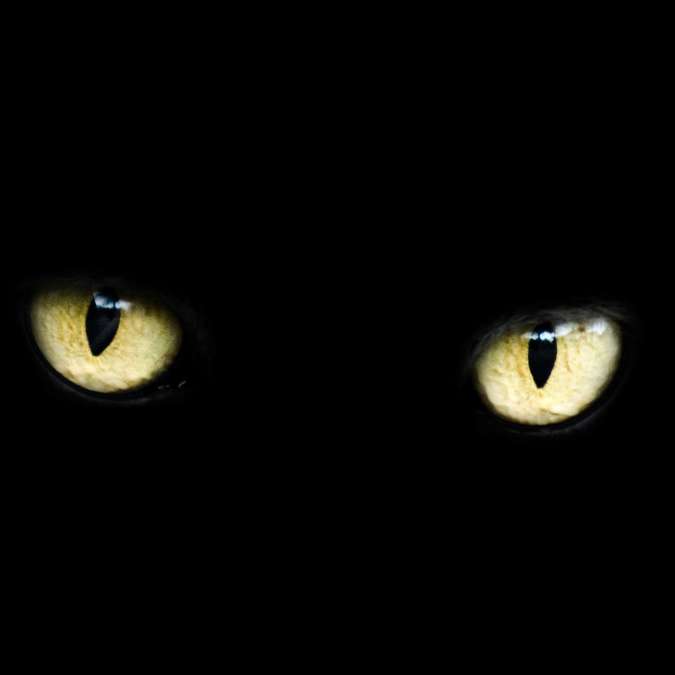
Every year, as October 31st approaches, a chill fills the air — and not just because of the autumn wind. Halloween is a night when the lines between reality and imagination blur, and when urban legends — those eerie tales whispered around campfires or shared on social media — seem to come alive again.
From stories about poisoned candy to haunted mirrors and phantom hitchhikers, urban myths resurface every Halloween, blending fear, curiosity, and nostalgia. These tales may not always be true, but they reflect something deeply human: our fascination with mystery, danger, and the unknown.
In this article, we’ll explore the most famous urban legends that return every Halloween, reveal their origins, explain why people still believe them, and uncover the psychological and cultural reasons behind their enduring power.
🎃 What Are Urban Legends — and Why Do They Resurface on Halloween?
Before diving into the spooky stories themselves, it’s important to understand what an urban legend really is.
An urban legend is a modern folktale — a story passed from person to person, often claiming to be true but lacking solid evidence. These legends spread because they’re believable, relatable, and often contain a moral warning.
Examples include:
- “A killer hiding in the back seat.”
- “A babysitter receiving mysterious calls.”
- “Razor blades hidden in Halloween candy.”
🕯️ Why They Return Every Halloween
Halloween is the perfect setting for these myths to thrive. The night itself is full of darkness, costumes, and symbolism related to death and fear. People are more open to the supernatural, and media outlets often recycle these stories to entertain — or warn — the public.
Every Halloween, urban legends serve a double purpose: they add excitement to the holiday and feed our primal fears of what might be lurking in the shadows.
🍬 The Poisoned Candy Myth: Fear Wrapped in Sweetness
Perhaps the most famous Halloween urban legend is that of tampered candy — the idea that strangers hand out poisoned or razor-blade-filled treats to unsuspecting children.
🎭 The Origin of the Myth
This story first appeared in the 1970s, during a time of growing parental anxiety about child safety. It gained traction after isolated real-life tragedies — though none involved random strangers — were falsely linked to Halloween candy.
The most notorious case was that of Ronald Clark O’Bryan in 1974, a Texas man who poisoned his own son’s candy with cyanide to collect life insurance money. Although his crime was specific and personal, the media sensationalized the event, sparking decades of paranoia.
🧁 The Modern Impact
Despite no verified cases of strangers intentionally harming children through Halloween candy, the legend persists. Parents still check sweets before allowing their kids to eat them, and hospitals have even offered to X-ray treats “just in case.”
💡 Hidden Meaning
This myth reflects parental fears of a dangerous, unpredictable world. It’s less about candy and more about the anxiety surrounding trust, community, and the safety of children.
👻 The Bloody Mary Legend: The Mirror That Reflects Fear
“Say her name three times in the mirror, and she will appear.” Almost every child or teenager has heard this chilling challenge — the ritual to summon Bloody Mary.
Origins of the Story
The Bloody Mary legend dates back centuries, with variations across cultures. Some versions claim she’s the vengeful spirit of a murdered woman, while others link her to historical figures like Queen Mary I of England, known as “Bloody Mary” for executing Protestants during her reign.
By the mid-20th century, the story evolved into a sleepover dare: stand in front of a darkened mirror and chant “Bloody Mary” three times. The legend warns that her ghostly face will appear — sometimes beautiful, sometimes monstrous.
🎃 Why It Thrives on Halloween
Halloween’s connection to spirits and the supernatural makes this legend especially powerful. The mirror itself — a symbol of reflection and self-awareness — adds psychological depth, representing humanity’s fear of confronting its own darkness.
💡 Hidden Meaning
The Bloody Mary myth isn’t just a ghost story. It’s a rite of passage — a way for children and teens to test courage, face fear, and explore the mystery of death and the unknown in a “safe” setting.
🚗 The Vanishing Hitchhiker: A Ghostly Passenger
A lonely road, a driver picking up a stranger, and a mysterious disappearance — this is one of the oldest and most haunting urban legends in the world.
🌫️ The Story
A driver offers a ride to a young woman late at night. She’s quiet, pale, and often dressed in white. When the driver reaches her destination, she vanishes from the car. Later, when the driver knocks on the door, a grieving parent explains that the girl died years ago on that very road.
🧭 Cultural Variations
Versions of the Vanishing Hitchhiker exist across the globe — from the United States to Japan. In Hawaii, she’s known as “Pele’s hitchhiker.” In Korea, she may appear as a soldier. Each version reflects local beliefs about restless spirits.
🚦 Why It Returns Every Halloween
Halloween brings ghost stories back to life, and few are as atmospheric as this one. Empty roads, foggy nights, and the unknown presence of the supernatural create the perfect Halloween setting.
💡 Hidden Meaning
The legend symbolizes human guilt and empathy, as well as our need to connect with those who have passed on. It also warns against ignoring the fragile line between life and death.
☎️ The Babysitter and the Man Upstairs: Terror in the Ordinary
One of the most chilling Halloween myths doesn’t take place in a graveyard or haunted house — but in a quiet suburban home.
📞 The Story
A teenage babysitter receives strange phone calls from a man telling her to “check the children.” She calls the police, who later discover that the calls are coming from inside the house.
🧩 The Real-Life Roots
This story gained popularity in the 1960s and 1970s, inspired in part by actual crimes involving babysitters. It was later immortalized in the 1979 horror movie When a Stranger Calls.
🕯️ Why It Resurfaces During Halloween
This legend strikes fear because it turns the safest space — the home — into a site of terror. During Halloween, when people are already on edge and expecting scares, it resurfaces as a reminder that evil doesn’t always wear a mask.
💡 Hidden Meaning
The tale reflects deep social anxieties: the vulnerability of young women, the fear of isolation, and the breakdown of security in everyday life. It’s not just a horror story — it’s a psychological mirror of modern society.
🦇 The Black-Eyed Children: The Modern Myth of Fear
Unlike older legends, the Black-Eyed Children story is a modern creation — born from the internet but carrying the same eerie power as ancient ghost tales.
👁️ Who Are They?
The myth describes pale-skinned children with completely black eyes who knock on doors late at night, asking to be let inside. Witnesses claim to feel intense dread before slamming the door shut.
🌌 The Digital Birth of a Legend
The story first appeared online in the 1990s, when journalist Brian Bethel shared his own supposed encounter. Since then, countless people have reported similar experiences, keeping the myth alive through forums, podcasts, and social media.
🎃 Why It Peaks at Halloween
Halloween, a night associated with the return of spirits, provides the perfect stage for these mysterious beings. Their combination of innocence and horror — children who evoke fear instead of comfort — taps into one of humanity’s deepest psychological contradictions.
💡 Hidden Meaning
The legend of the Black-Eyed Children plays on our instinct to protect the young — and our terror when that instinct is betrayed. It reminds us how fear evolves with technology and modern life.
🕸️ The Killer in the Backseat: The Fear Behind the Wheel
Another Halloween favorite is the story of the killer hiding in the backseat — a warning often repeated to young drivers.
🚘 The Story
A woman driving home at night notices a car following her closely. Every few minutes, the driver behind flashes their high beams. Terrified, she races home and calls the police — only to learn that the other driver was trying to warn her that a killer was hiding in her backseat.
🧠 Why It Endures
This tale feeds on universal fears: being alone, being followed, and being trapped. The confined space of a car turns a common experience into a nightmare.
🧛 Hidden Meaning
The legend symbolizes vulnerability and awareness, reminding us to stay alert — both literally and metaphorically. It’s a story about danger lurking just behind us, unseen but real.
🕯️ Why We Still Believe: The Psychology of Halloween Myths
Even in an age of science and skepticism, urban legends thrive. But why do we keep telling — and believing — them?
- They reflect real fears.
Myths like poisoned candy or the babysitter story mirror genuine social anxieties — about strangers, safety, and the unknown. - They connect generations.
Halloween myths are modern folktales. Parents who once feared Bloody Mary now tell their kids not to trust strange candy. - They make fear fun.
By turning anxiety into entertainment, these stories let us confront our fears safely. Halloween becomes a ritual of emotional release. - They evolve with the times.
The Black-Eyed Children or digital “Slender Man” legends prove that even in the internet age, we still crave a good scare — we’ve just moved it online.
🎭 The Cultural Legacy of Halloween Myths
Urban legends are more than scary stories — they’re a reflection of society’s collective imagination. Every generation reinvents them, adding new twists and symbols.
From medieval ghost tales to internet-born myths, these stories remind us that fear is timeless — but also deeply human.
As long as there’s Halloween, there will be whispers in the dark — tales of mirrors, candy, phone calls, and things that go bump in the night. And even if we know they’re not real… part of us always wonders, “What if they are?” 👻🕯️
Sources:
- Smithsonian Magazine: The Truth Behind Halloween Urban Legends (2024)
- History.com: Origins of Halloween Myths and Fears (2023)
- BBC Future: Why Urban Legends Persist in Modern Culture (2024)
- Encyclopedia Britannica: Folklore and Urban Myths
- National Geographic: The Evolution of Halloween Traditions (2024)

